Breaking Baz: DreamWorks’ ‘The Wild Robot’ Set To Wow Audiences At Annecy Animation Festival & How Lupita Nyong’o Discovered The Movie’s Voice Of Kindness
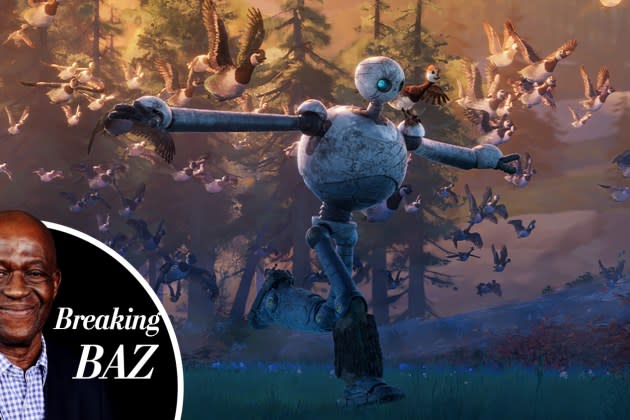
EXCLUSIVE: A key principle underpinning DreamWorks Animation’s The Wild Robot — directed and written by Chris Sanders, produced by Jeff Hermann and starring Lupita Nyong’o as the voice of Roz the robot — is that kindness matters, say the filmmakers.
Based on Peter Brown’s 2016 bestseller, the movie is releasing in U.S. theaters on September 27 and in the UK on October 18. It follows the adventures of Rozzum unit 7134, aka “Roz,” when she — the filmmakers confirmed her gender as female — is shipwrecked on a remote island, inhabited only by humans, and how she must learn by interacting with and exploring her environment.
More from Deadline
She forms a connection with the island’s animals “and becomes something she didn’t expect to be,” says Hermann.
Roz discovers a goose egg and adopts the egg, out of which hatches a gosling Roz names Brightbill, voiced by Kit Conner.
Also in the movie are Pedro Pascal as Fink the fox; Catherine O’Hara as possum Pinktail; Bill Nighy as Longneck the wise goose; and Stephanie Hsu as Vontra, a robot that will intersect with Roz’s life on the island. Other voices include Mark Hamill, Matt Berry and Ving Rhames.
First-look footage from The Wild Robot, introduced by Sanders, was being revealed today at the Annecy International Animation Film Festival. Also, some of the movie’s animators will be discussing their art form. Also later today, DreamWorks will release the film’s second trailer.
“Motherhood is at the core of the whole thing and we’ve been able to dig into the emotional ballast,” Sanders explains when we meet at AIR Studios in Hampstead, London.
The building was originally a church and missionary school, designed in the Romanesque style. In a vast music chamber, a 67-strong orchestra led by Geoff Alexander is laying down the score composed by Kris Bowers, he of Bridgerton fame.
As music fills the control room, Sanders and his colleagues study scenes from The Wild Robot on monitors that are silent.
As we watch Roz help Brightbill make attempts to fly, it’s undeniably moving. The animated footage and Bowers’ melodies provide their own dialogue.
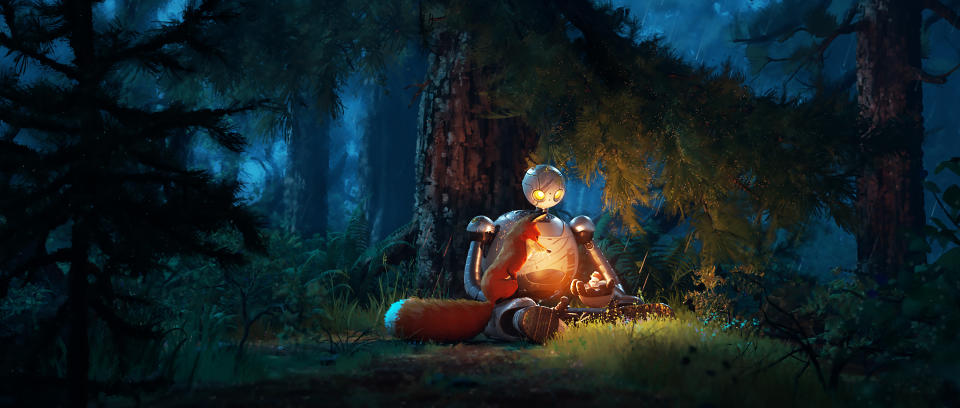
“The gosling is a runt and was chosen by nature not to survive,” Hermann fills in as I’m transfixed by the footage showing up on the monitor.
“He’s not good at flying and desperately wants to learn and grows up thinking Roz is her mother,” he adds.
Hermann tells me that when he and Sanders first met with Brown, the author “told us that kindness is a survival skill and that was something that resonated very deeply with us because it’s obviously very relevant in lots of ways to what the modern world is experiencing right now. We wanted that to ring through.”
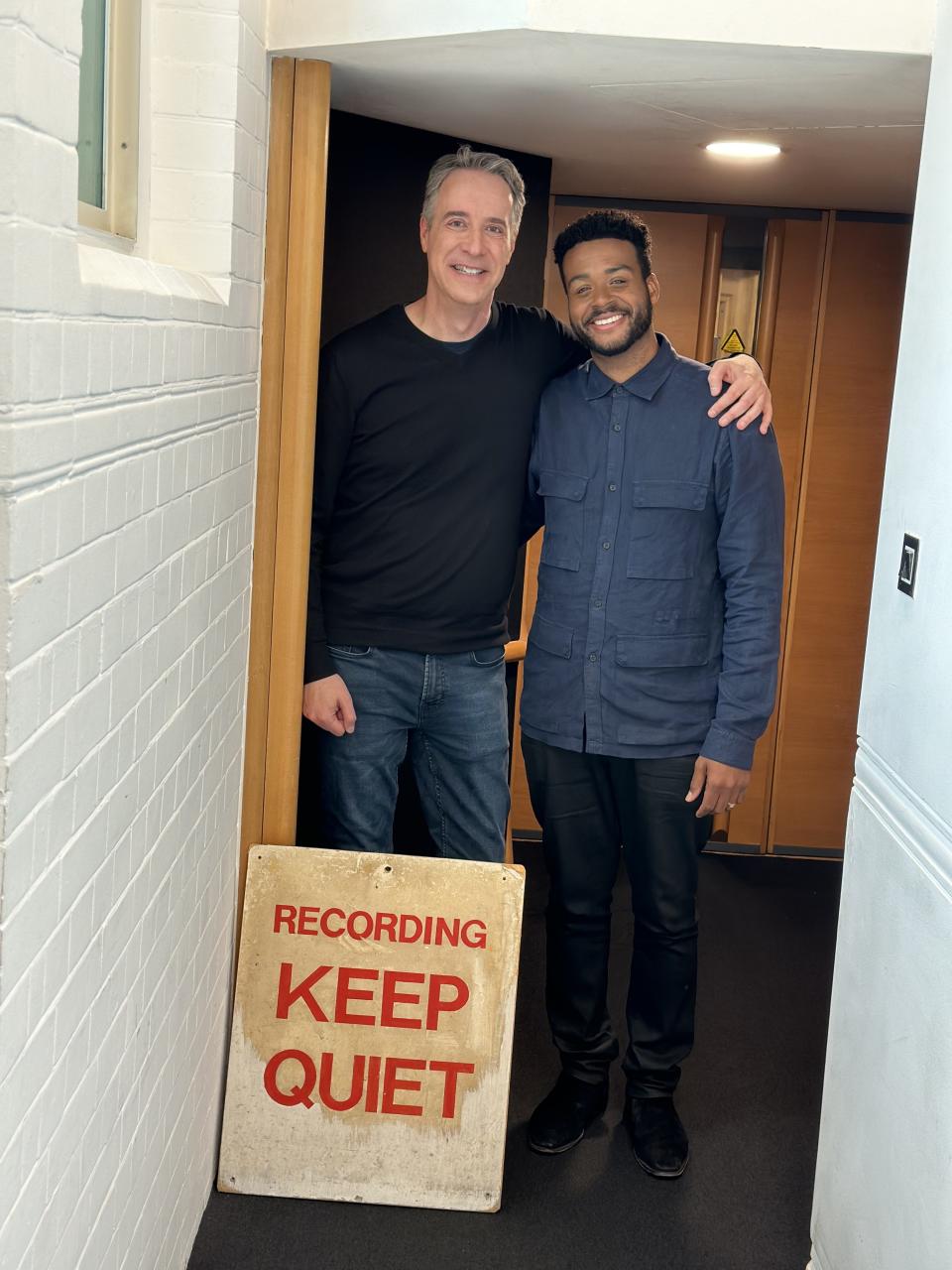
Those conversations with Brown about kindness and empathy “helped us shape Roz in who she is because she’s programmed not to harm anyone, so there’s an innate kindness programmed into her. But she also has to learn to overcome not just harm, but to help take care of others in a way that gives her a soul in the end.”
Sanders too is grateful for the observations from Brown about the kindness engineered into his creation. He says that it’s not something Brown put into the book explicitly, “but it’s a good example of what we could put into the film. It became quite the guide for us if we ever felt like we were losing track of the story.”
Sanders, who also directed Lilo & Stitch, How to Train Your Dragon and was a writer and story artist on Beauty and the Beast, says that Roz has no malice, and she never strikes out at anything, and does have growing emotions, and observes that “any movie about a machine living a life inevitably it’s going to be a more dimensional thing. But this story is more than just that, it’s really about relationships.”
When I suggest DreamWorks host a screening for Congress, Sanders responds, smiling wryly, “I don’t disagree.”
Before I get too dewey-eyed, Hermann shares that there are Bambi moments “of pure terror in this. Things that are frightening, things that are devastating. That was something that the book did so well. In that it didn’t shy away from difficult, challenging topics, to show kids that the world doesn’t always work out in the way you want it too, but it helps you navigate that.”
The Wild Robot illustrated novel was Brown’s first children’s book. In his online blog, the writer and illustrator describes how he spent months researching, as he put it, “unnatural things living in surprising places.”
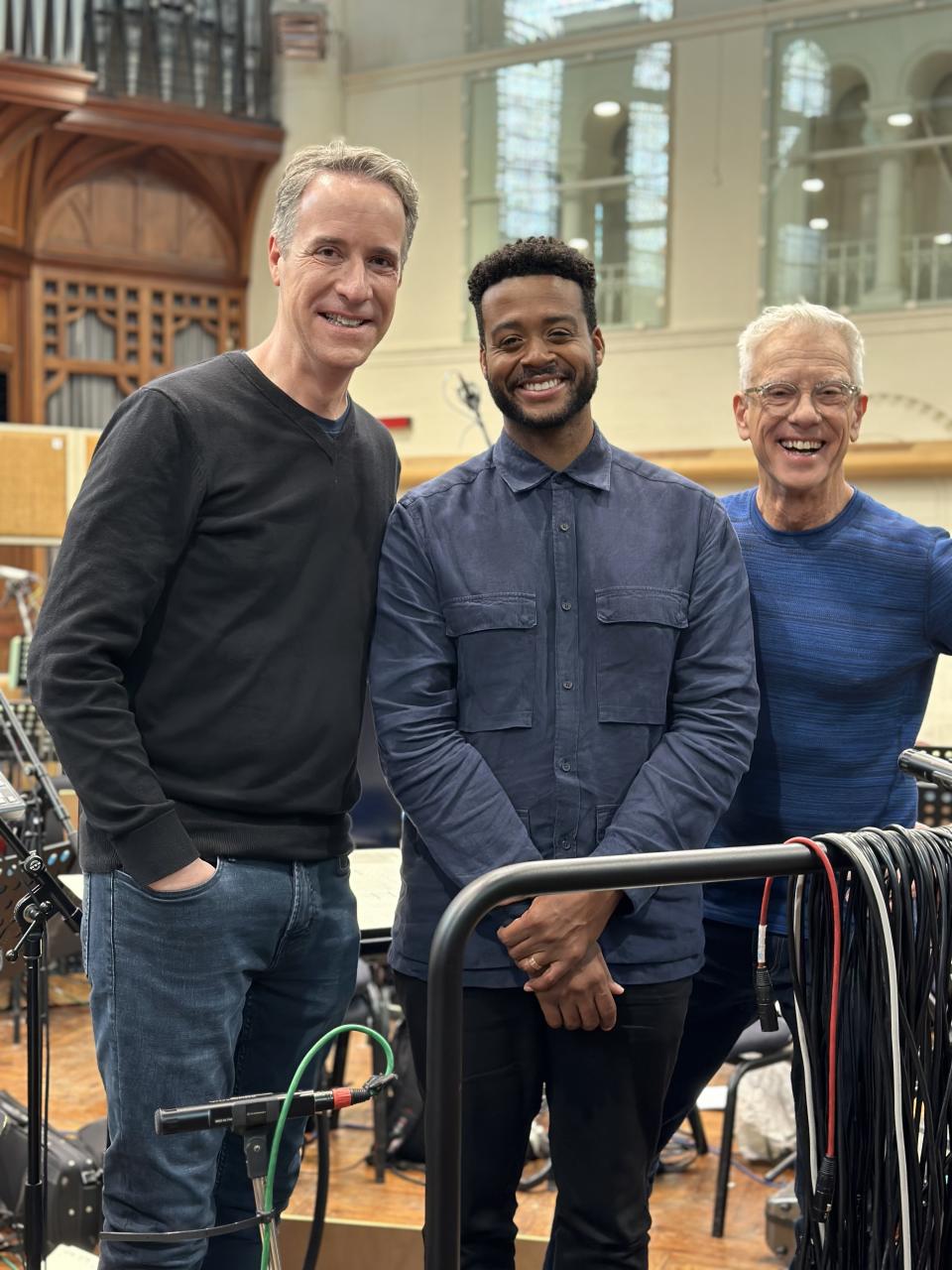
Brown scribbled notes about a robot living in the wild from science fiction books such as Isaac Asimov’s The Complete Robot, Arthur C. Clarke’s 2001 and Karel Capex’s 1920s science fiction play R.U.R (Rossum’s Universal Robot) – from which Roz’s name is derived. He also studied tomes that explored the natural world. They included Brian Christian’s The Most Human Human and Bradford Angier’s How to Stay Alive in the Woods to help Brown prober the question: “What would an intelligent robot do in the wilderness?”
Sanders had a host of similar conversations with Nyong’o, the film’s star.
“That was the most intense, I think, discussion of a character that I’ve ever gone through because so much of Roz is in the voice,” he says admiringly of working with Nyong’o.
All of the film’s characters live in their voice, Sanders adds, but observes that Roz “is far more subtle, being a robot. She comes from a very unusual place, and one of the big discussions we had together was where does she start? Where does she end? How do we project that?”
He praises Nyong’o for her efforts to “find that character and find the voice.”
What she could do with her voice was “beyond acting,” he marvels.
A conversation Sanders had with sound designer Randy Thom proved an eye-opener, or perhaps it even left them open-mouthed.
Sanders asked Thom, “What does an artificial voice even sound like?”
“And what he came back with was surprising but it made perfect sense. He said the big push in artificial voices is to make them sound not artificial, but to make them sound as real as possible.”
That was a revelation for Sanders and Nyong’o. “It allowed Lupita to stay in a space where she was human but a very particular human. A human who sees things in a very compartmentalized way, a very structured way. She’s like a giant encyclopedia. There’s a lot she knows but a lot she doesn’t understand,” Sanders tells me.
“She knows statistics, she knows certain things about how things are put together, but she doesn’t understand how they work,” he adds.
For instance, in the case of Brightbill, the gosling “is a being completely outside of her database.”
Armed with that knowledge, Sanders and Nyong’o recorded each scene several times.
Sanders laughs and says that Nyong’o would read his script changes “and she’d react to these pages and she would tell me what she thought and where she thought it was lacking.”
The filmmaker would go away and rewrite some more for Nyong’o to rerecord.
“We allowed Roz to be more dimensional from the beginning,” Sanders explains, “because she still has a long ways to go, but we wanted people to really connect with her immediately.”
I ask how Nyong’o achieved that breakthrough. He shakes his head. “It’s simply the way Lupita performed the moments.”
Sanders says he would have been worried if Nyong’o “had come in and like, shrugged, read the lines and gone home. I loved that she pushed back, I loved that that she had things to say, and I loved that she made me work harder as a writer and as a director to get this to where it needed to be.”
He admits that Nyong’o “would catch me at things.”
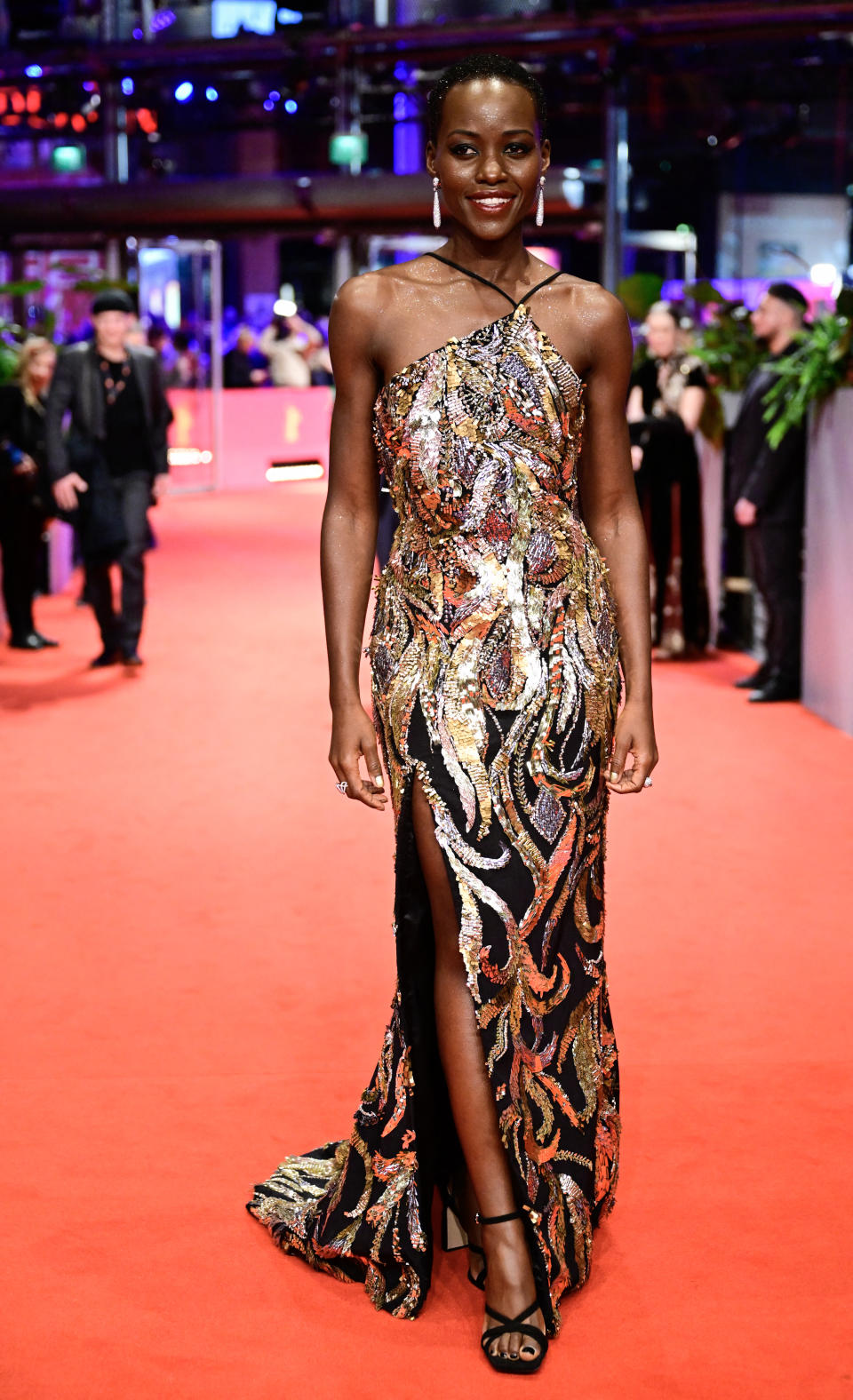
Grinning, he continues, “She’d say, I don’t think this is right, I think you wrote the wrong direction here.” And she would tell me what she thought. I don’t think there was ever a moment where I didn’t disagree with what she said.
“Getting notes is never a party but you gotta do it. You can’t ignore them. I can’t.”
The dialogue is spare in the movie.
Bowers’ soaring score was just as extensively researched for the movie as the search was for Roz’s voice.
There’s 80 minutes of music in the film. The movie is 92 minutes long. “It’s an amazing gift as a composer to have that canvas to plays with,” says Bowers, who grew up loving Silly Symphonies, Disney’s Fantasia “and all those classic cartoons where there’s this indelible connection between movement and musical. And orchestral music specifically is where a lot of my love for a score could be originated.
“And so to have the opportunity to work on something where music plays a role feels like a childhood dream for sure,” the composer says.
Bowers was brought in way before animation began because the filmmakers knew the music was going to be such a big component of the storytelling. He came onboard late in 2022, and the first pieces of music he wrote at the beginning of 2023.
“That also allowed us to iterate and sit with the music for a very long time, so by the beginning of this year we had little over half of the movie finished and that really allowed us to feel very confident about the palette, about the themes and all that stuff.”
One of Bowers’ first thoughts when he was thinking through his score “was how to capture the sound of the wilderness while not choosing an instrumentation that would evoke thoughts or connections to any sort of ethnicity.”
There’s “something a bit tropey about hearing some ethnic things when you see the wilderness. For me personally, if I heard it I’d immediately be wondering what culture that sound is coming from,“ Bowers carefully notes.
To that end, he sought out Sandbox Percussion to collaborate. ”They play percussion on a lot of found sound, say like a branch from a tree,” he says of efforts to find a sound that echoed with what Roz was experiencing on the island.
Also, the 40-strong choir that was due to join the orchestra at AIR Studios “would only use syllables so that we don’t have the choice of words or language, and again, not to give us any specific cultural context through language,” Bowers says.
I automatically assume that Bowers’ score for Netflix’s Bridgerton is also recorded in London.
“You’d think,” he says, doubling over with laughter.
Not so. The music for the first season of Bridgerton was composed during the pandemic using a system where each of the 10 or 12 musicians recorded at their homes. ”Then we put it all back together,” Bowers says.
He continues: ”Because we found a sound we really liked we continue to do it that way. All three seasons and Queen Charlotte were all done remotely.”
Suddenly, the violinists and cellists put down their bows and for the first time in the course of a four-hour-or-more visit I watch a robot called Roz trying to teach a gosling to fly.
There’s no music. No words.
Yet I am strangely beguiled by this robot building a community in the wild.
Good that it’s in theaters in awards season.
Best of Deadline
‘Bridgerton’ Season 3 Ending Explained: From Season 4 Setup To The Post Credit Scene
Who Is Michaela Stirling in 'Bridgerton'? Francesca Changes, Explained
Hollywood & Media Deaths In 2024: Photo Gallery & Obituaries
Sign up for Deadline's Newsletter. For the latest news, follow us on Facebook, Twitter, and Instagram.


